Although the sword is emphasized by our imaginations of the Vikings, the axe and the spear were by far the more common weapons. The axe, like the sword, could be made with great care and craftsmanship, and many were given names of power (like swords).
No Viking homestead would go without a stout-headed utility axe for splitting wood and hammering stakes. This could be used in a pinch for defense, but the woodmans axe was not ideal for war. It was thick bladed and ill-balanced. For war, the Viking preferred an axe designed to slay men, not trees. The war axe is thinner bladed and greater care is given to overall balance. Wider blades cause maximum-sized wounds and the blade tips are often fashioned into points for thrusting and puncturing strikes. This thinner axe is quicker and strikes with gruesome force. A war axes thin blade might get damaged striking a tree, but it is more than capable of splitting a mans skull, and perhaps his helmet.
Contrary to popular depiction, the war axe is not a brutishly wielded device of destruction – it is quick and light. The cunning Viking could use the long lower half of the axe, the beard for a number of tricks – he could use it to hook behind the ankle of head of the foe and throw him off balance. A shield could be hooked and pulled from his grip and some even used to axe to hook into the wall of a wooden palisade and pull themselves over the walls with their axe handles! The back end of the head could be used as a mallet to stun or crush in a backswing and the tips, if sharpened, could pierce and gouge. Clearly the axe of war was a sophisticated tool giving its wielder a wide range of options to win his fight.
This two-handed Viking Axe has has a thick axehead of unsharpened, blunt, high carbon steel. Nordic knotwork is embossed on both sides of the axe. The head has been riveted onto the wooden haft. The wood haft is laced with leather held in place with metal tacks.


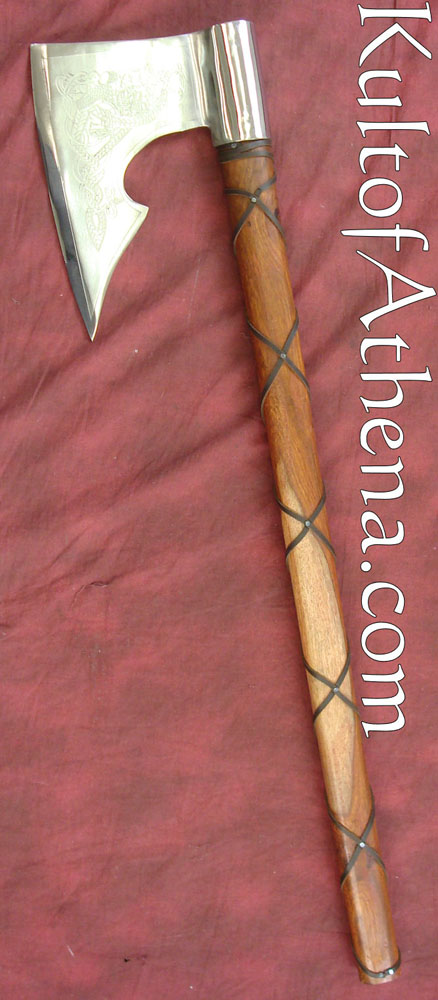
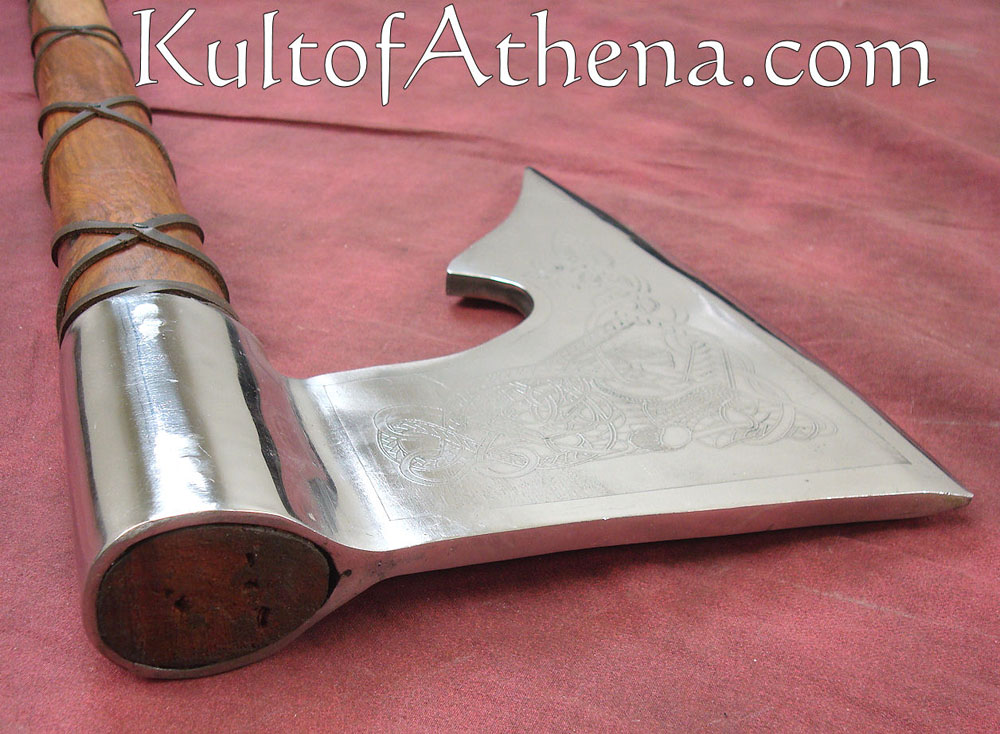


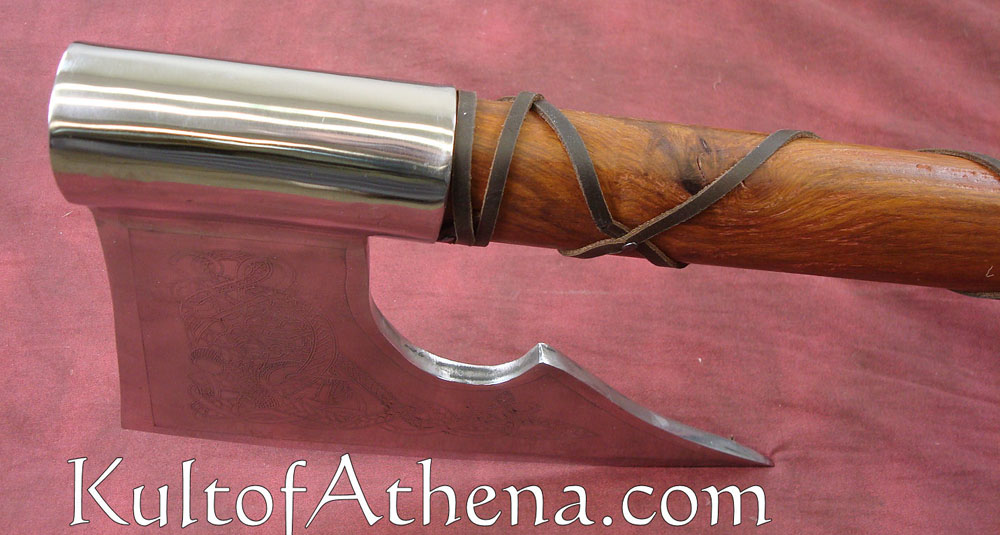
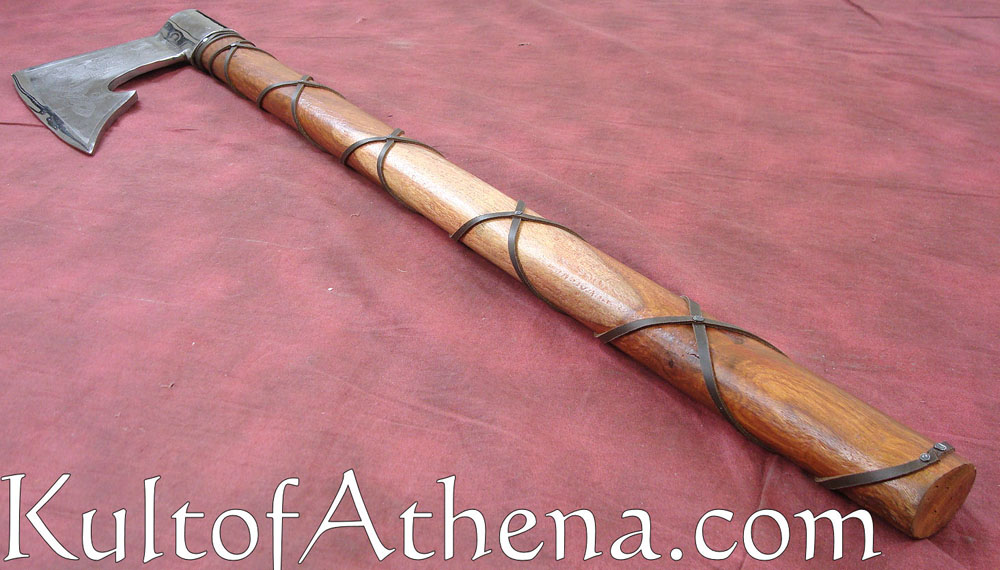
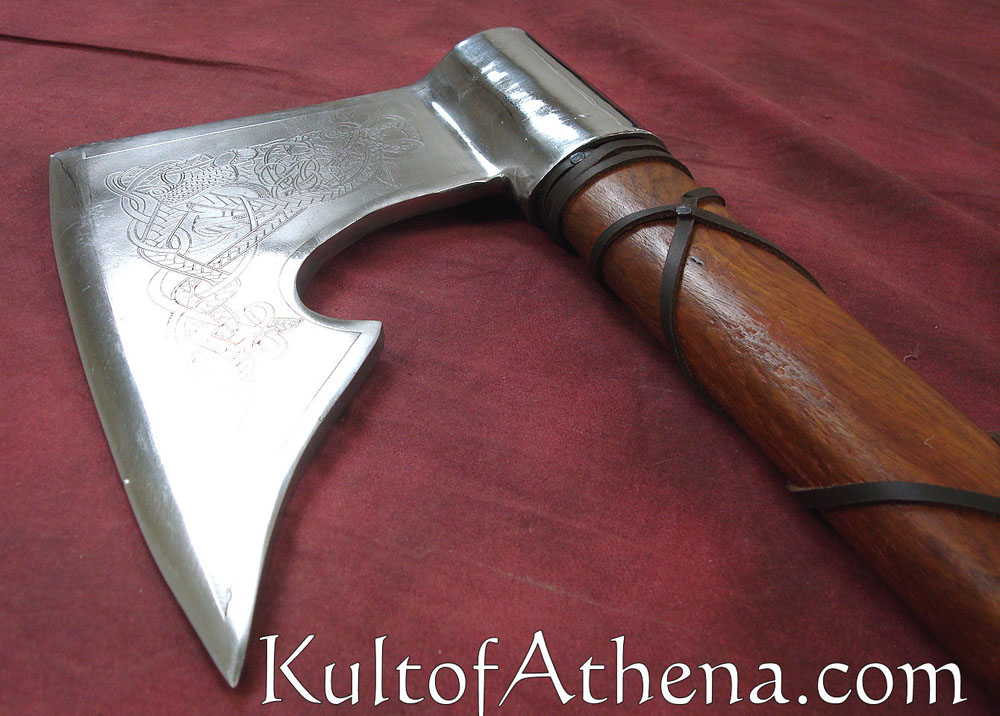
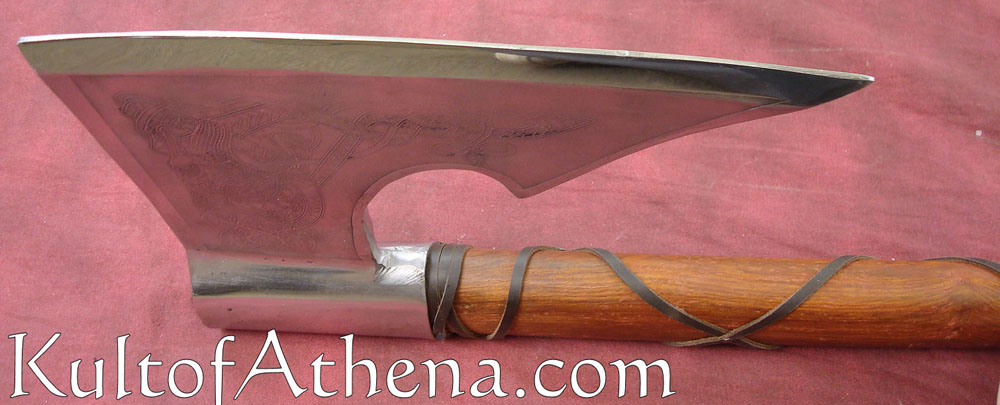
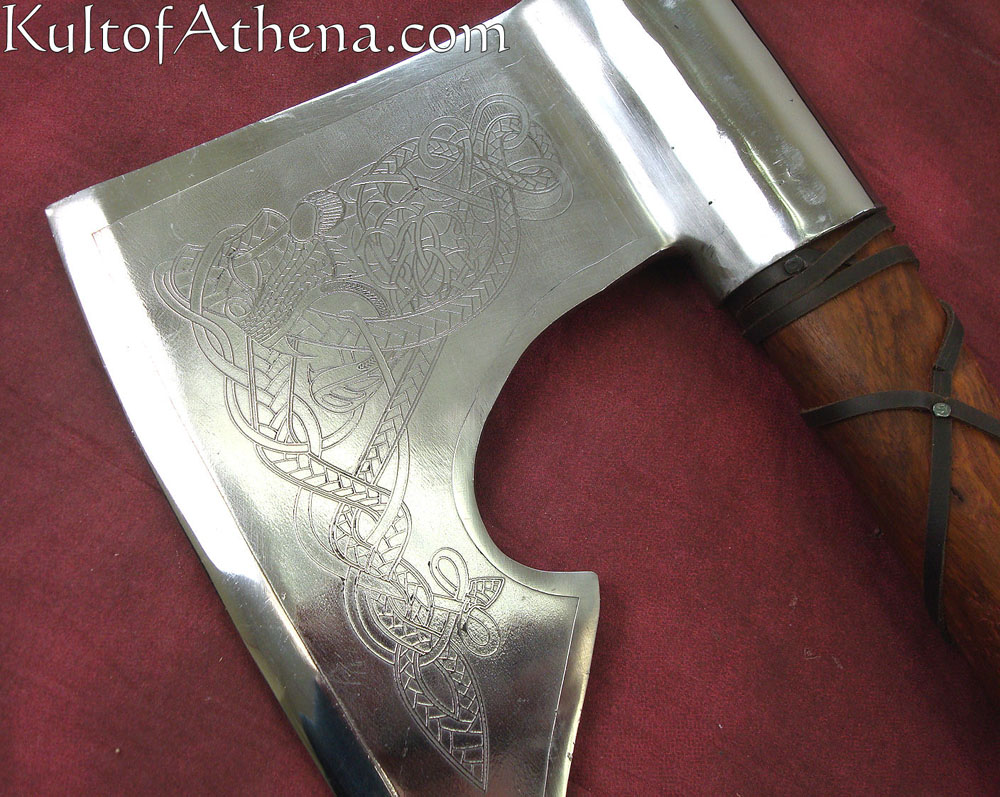
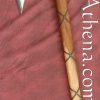
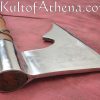
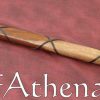
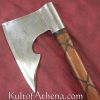

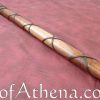

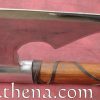
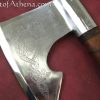
Reviews
There are no reviews yet.